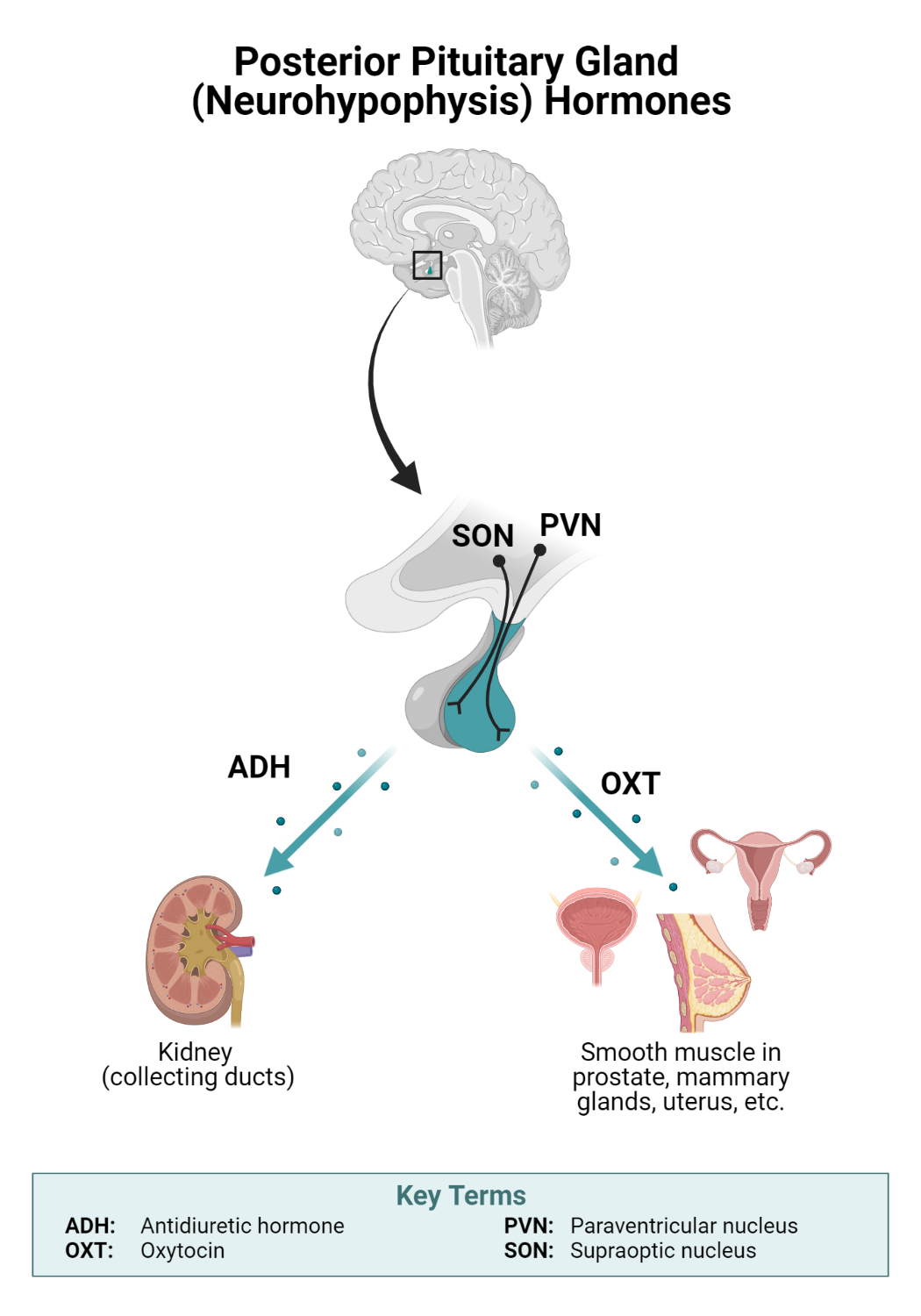Vasopressin in Physiology
In terms of renal water conservation, the role of Antidiuretic Hormone (ADH, also known as Vasopressin or AVP) in the hypothalamic-pituitary-renal axis is crucial. Vasopressin influences various tissues differently, determined by the type of AVP receptor found in the target tissue.

The following table provides a summary of the subtypes of AVP receptors and their respective effects.
Table 1 : AVP receptor subtypes and Their Physiological Impacts
| AVP Receptor | Tissue | Effect |
| V1a | Vascular smooth muscle, Myocardium | Involves vasoconstriction, platelet functionality, and cardiac ionotropic function |
| V1b | Pituitary | Facilitates pituitary ACTH secretion |
| V2 | Renal collecting duct, Vascular endothelium | Water Conservation and release of vWF and factor VIII |
Reference: Verbalis JG et al. (2013) Diagnosis, Evaluation, and Treatment of Hyponatremia: Expert Panel recommendations. Am J Med 126:S1–S42.
The syndrome of inappropriate antidiuretic hormone (SIADH) is the primary cause of hyponatremia in both outpatient and inpatient scenarios. Untreated or mismanaged hyponatremia cases associated with this syndrome can lead to significant health risks. SIADH was previously termed Schwartz-Bartter syndrome, acknowledging the physicians who initially identified it.
What is the mechanism of action of Tolvaptan?
Vaptans, known as V2 receptor antagonists, hinder the binding of natural vasopressin to V2 receptors. Vaptans induce “aquaresis,” which refers to the excretion of water while electrolytes are retained. This process contrasts with diuretics’ actions, which promote the elimination of both fluids and electrolytes. In conditions such as SIADH, where there is an excessive conservation of free water compared to sodium due to the impact in the renal collecting tubules, Vaptans offer a more reasonable treatment alternative than traditional diuretics alone.
Guidelines for Practitioners
- Patients taking tolvaptan may experience dehydration due to increased urination (polyuria) and excessive thirst (polydipsia).
- Despite tolvaptan being generally safe, it is advisable to start its administration in a controlled inpatient environment. This approach helps mitigate the risks of abrupt changes in serum sodium levels, which can lead to a dangerous condition called osmotic demyelination syndrome.
Kindly Let Us Know If This Was helpful? Thank You!


